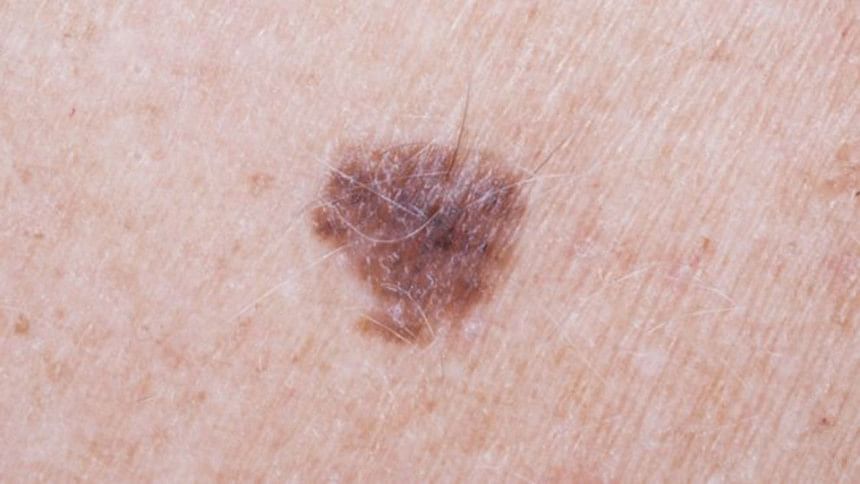Arm mole count 'predicts skin cancer risk'

Having more than 11 moles on one arm indicates a higher-than-average risk of skin cancer or melanoma, research suggests.
Counting moles on the right arm was found to be a good indicator of total moles on the body. More than 100 indicates five times the normal risk.
The study, published in the British Journal of Dermatology, used data from 3,000 twins in the UK.
GPs could use the findings to identify those most at risk, it said.
Melanoma is a type of skin cancer affecting more than 13,000 people in the UK each year.
It develops from abnormal moles, so the risk of being diagnosed with a melanoma is linked to the number of moles a patient has.
Researchers from King's College London studied a large group of female twins over a period of eight years, collecting information on skin type, freckles and moles on their bodies.
After repeating the exercise on a smaller group of around 400 men and women with melanoma, they came up with a quick and easy way to assess the risk of skin cancer.
Females with more than seven moles on their right arm had nine times the risk of having more than 50 on their whole body.
Those with more than 11 on their right arm were more likely to have more than 100 on their body in total, meaning they were at a higher risk of developing a melanoma.
The findings could help GPs to identify those with an increased risk of developing a melanoma.
ABNORMAL MOLE
Lead author Simone Ribero, of the department of twin research and genetic epidemiology at King's, said: "The findings could have a significant impact for primary care, allowing GPs to more accurately estimate the total number of moles in a patient extremely quickly via an easily accessible body part."
Consultant dermatologist and study co-author Veronique Bataille said if a patient was worried about an abnormal mole and went to see their GP, counting moles on one arm "might ring alarm bells" and highlight those patients who should be seen by a specialist more quickly.
Dr Claire Knight, health information manager at Cancer Research UK, said the study findings were helpful, but added that fewer than half of melanomas develop from existing moles.
"It's important to know what's normal for your skin and to tell your doctor about any change in the size, shape, colour or feel of a mole or a normal patch of skin.
"And don't just look at your arms - melanoma can develop anywhere on the body, and is most common on the trunk in men and the legs in women."

 For all latest news, follow The Daily Star's Google News channel.
For all latest news, follow The Daily Star's Google News channel. 



Comments